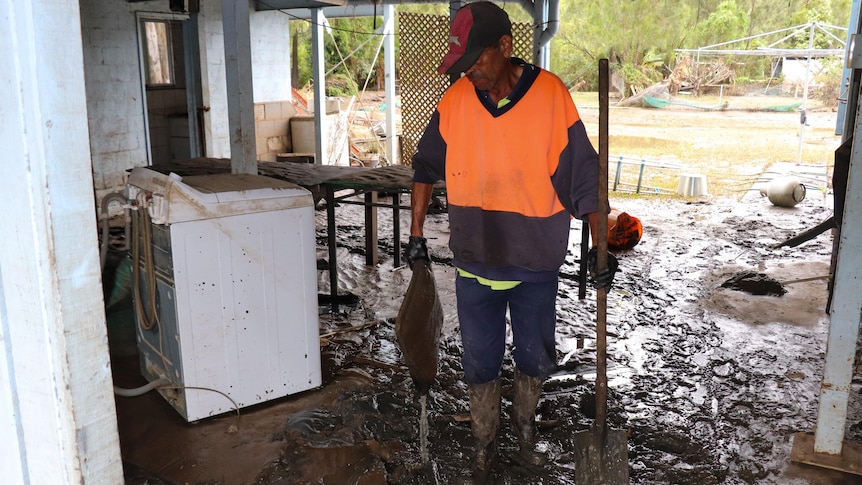Indigenous community leaders on the New South Wales far north coast say the emergency response to this year’s flooding disaster ranged from unprepared and uncoordinated to non-existent.
The Bundjalung Nation Flood Response Report was released to the public today after earlier being submitted to the Independent Flood Inquiry.
Some of the community leaders’ key findings included:
- The emergency response was under resourced, unprepared, uncoordinated, and simply non-existent for many,
- Woefully inadequate planning and environmental systems were not informed by First Nations science, cultural knowledge, and data; and
- There was a lack of First Nations people and voices in government structures.
Report co-author Arrabella Douglas from the Tweed-based Currie Country Group was among those to speak at the release ceremony today.
“We have come together because we are black first,” she said.
“We are worried and concerned about our Aboriginal communities, and we are prepared to stand up and do it because if we don’t we know we will be overlooked.”
Rebecca Woods from the Bogal Local Aboriginal Land Council struggled to contain her emotions as she spoke about the situation in nearby Coraki where about 60 people are still living in tents after their homes were inundated.
“We’ve still got people living in temporary accommodation solutions with no real strategy,” she said.
The community’s report made more than a dozen recommendations including:
- Improve planning, flood mitigation, and environmental mapping processes by incorporating local First traditional Nations owners’ knowledge,
- Improve emergency responses during and after natural disasters, and ensure First Nations voices are driving decisions,
- Ensure crucial infrastructure is disaster-ready for future events; and
- Build the capacity of Aboriginal organizations to function and respond in times of natural disaster.
Chris Binge, who helped to rescue more than 200 people from Cabbage Tree Island at the peak of the crisis, urged the government to take note.
“If government can’t keep up with us we will do what needs to be done because that’s the sort of people we are,” he said.
“Leadership is about listening, it’s about learning from what’s happened and also what didn’t happen.
“Don’t feel sorry for us, stand beside us.
“Walk with us, let us guide you on a journey that will change your lives, because we want to be the people changing our lives for us.”
no release date
The final report from the NSW Independent Flood Inquiry was handed to the state government on Sunday.
Deputy Premier Paul Toole said today there was no firm date for its public release.
“I want to see that report released as quickly as possible,” he said.
“But it’s also important that we see what is in that report to be able to release it and talk about what actions the government is going to do.”
.
